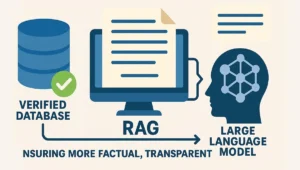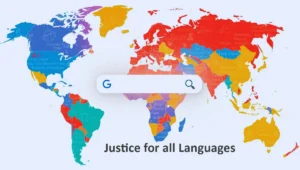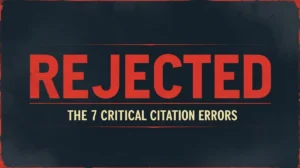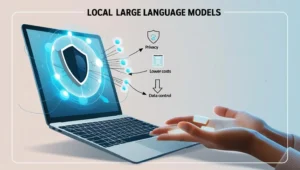I’m here to explore the fascinating world of multimedia in research. We’ll discover how integrating visuals, audio, and interactive content can take your research to new heights by making it more engaging, accessible, and impactful.
multimedia meaning in research is computing techniques to present, integrate, and compute various types of media. Stay with researchly until the end of the article.
Table of Contents
The Art of Visual Storytelling
Multimedia research projects involve combining various types of media. Visuals like infographics, charts, and diagrams are amazing tools that can be used to present complex data in a way that is easy to understand and visually appealing. Richard E. Mayer’s book “Multimedia Learning” provides valuable insights into effectively integrating visual elements in research communication. By using these powerful storytelling techniques, you can make your research more engaging and accessible to your audience.

Use multimedia in research to create interactive presentations
Interactive presentations and special experiences are game-changers when it comes to engaging your audience and helping them connect with your research on a deeper level. Using multimedia tools in research presentations allows you to create dynamic communication that encourages participation and facilitates knowledge exchange.
Multimedia in research processes: Image-based content caters to visual learners and strengthens comprehension when combined with text. Infographics and data visualizations offer concise, engaging overviews of research processes or outcomes, making complex data more approachable.
Types of Multimedia in Research
- Visual Elements: Images, infographics, and data visualizations make complex data easier to understand and digest. They are perfect for Audiences and can grow the overall research experience.
- Podcasts and recorded interviews: They can provide valuable insights and are ideal for auditory learners. Breaking down complex concepts through audio helps make research more inclusive and engaging.
- Videos: Videos allow you to create a personal connection with your audience. They are ideal for presenting multimedia research topics and for explaining complex findings in a clear format.
- Interactive Features: Interesting experiences, encourage active engagement and promote a deeper understanding of your research. These tools make your work more dynamic and exciting.
Multimedia research papers involve integrating various media elements, including interactive components, images, videos, and audio.
The Future of Multimedia in Research
Technology continues to advance and multimedia in research processes will play a crucial role in shaping the future of scholarly communication. By accepting the potential of multimedia elements, you can contribute to a more interconnected and collaborative research landscape. The importance of multimedia in research is significant as it promotes innovation, creativity, and knowledge dissemination.
Best Practices for Seamless Multimedia Integration
To make the most use of multimedia in research, follow these best practices:
- Prioritize clear and concise communication.
- Ensure a user-friendly interface.
- Make your multimedia content accessible.
By keeping these principles in mind, you can create enjoyable and memorable research that stands out from the crowd. Multimedia research presentations increase engagement and help with retaining information.
The Innovative Power of Multimedia in Research Communication
Accepting multimedia in research communication can reshape how we share and consume knowledge. By utilizing visuals, audio, and interactive elements, you can create an involved and engaging research experience that transcends traditional boundaries. The use of multimedia in scientific research could improve engagement and accessibility.
Conclusion
I hope you’re inspired to explore the incredible potential of multimedia in your research. it’s clear that integrating visuals, audio, and interactive elements into scholarly communication is key to staying ahead in today’s fast-paced digital world. To ensure your research makes a significant impact, consider the following insights:
- Best practices: The importance of prioritizing clear communication, a user-friendly interface, and accessible multimedia content for maximizing engagement and reach.
- Trends in scholarly communication: Keep an eye on evolving digital trends and technologies that can improve your research presentation and cater to different learning preferences.
By accepting multimedia and staying informed about the latest innovations, you’ll contribute to a more networked, collaborative, and inclusive research landscape. Together, we can shape the future of scholarly communication and make research more accessible and enjoyable for everyone. Keep learning, and exploring, and never stop pushing the boundaries of what’s possible!
References
- “Multimedia Learning” by Richard E. Mayer – https://www.amazon.com/Multimedia-Learning-Richard-Mayer/dp/1316638081/
- “The Art of Interactive Design” by Chris Crawford – https://www.amazon.com/Art-Interactive-Design-Euphonious-Illuminating/dp/1886411840/
- “Data Visualization: A Successful Design Process” by Andy Kirk – https://www.amazon.com/Data-Visualization-successful-design-process-ebook/dp/B00ATYE3YG/
- “Designing Visual Interfaces: Communication Oriented Techniques ” by Mullet and Sano – https://www.amazon.com/Designing-Visual-Interfaces-Communication-Techniques/dp/0133033899/
FAQ
How can researchers ensure the accuracy of multimedia content in their research?
Ensuring the accuracy of multimedia content involves rigorous fact-checking, thorough data verification, and adherence to ethical standards in data representation. Cross-referencing information from credible sources and maintaining transparency in data interpretation are essential practices for upholding the credibility and integrity of multimedia-integrated research.
What are some accessible tools for researchers to incorporate multimedia elements into their work?
Researchers can utilize a range of accessible tools and software, including graphic design software, video editing tools, podcasting platforms, and data visualization software, to seamlessly integrate multimedia elements into their research. Exploring user-friendly and intuitive platforms that cater to diverse multimedia needs can facilitate the effective integration of multimedia in research communication.
How does the integration of multimedia elements enhance the impact of research findings?
Integrating multimedia elements enhances the impact of research findings by fostering a more engaging and interactive research experience for the audience. By catering to diverse learning preferences and communication styles, multimedia integration facilitates a deeper understanding and connection with research insights, thereby amplifying the relevance and accessibility of research findings to a wider audience.
What ethical considerations should researchers prioritize when incorporating multimedia elements into their research?
Researchers should prioritize ethical considerations such as data privacy, consent, and accurate representation when incorporating multimedia elements into their research. Respecting copyright laws, acknowledging sources appropriately, and maintaining transparency in data presentation are essential ethical practices that researchers should uphold to ensure the integrity and credibility of multimedia-integrated research.






